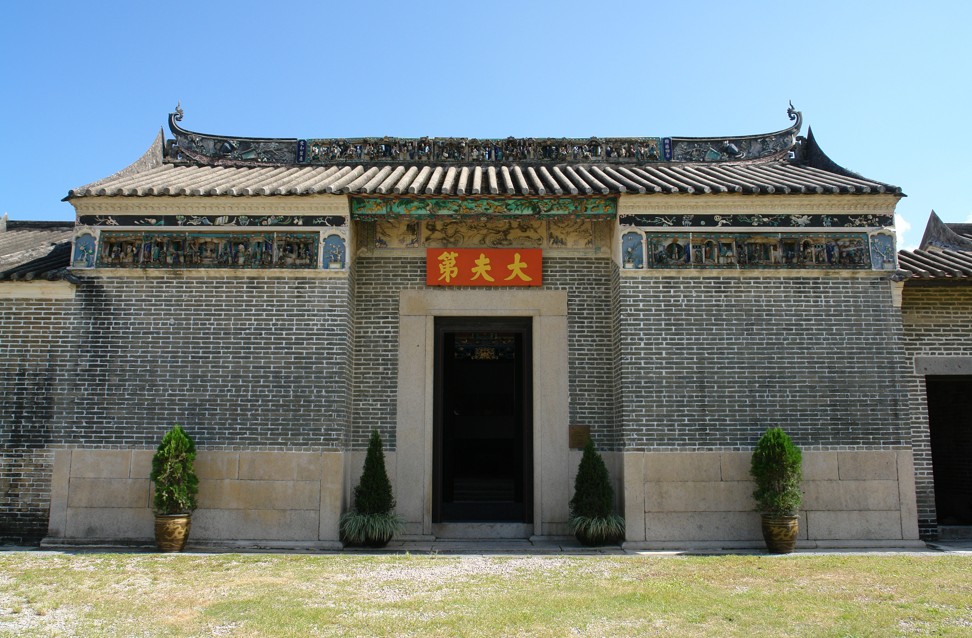
Mandarin’s Hong Kong house shows Sino-European cultural exchange was a two-way street
Decades before Britain leased the New Territories from China, a house built for a retiring civil servant featured fanlights borrowed from European architecture – evidence of longstanding Western influence over the Pearl River Delta

At San Tin, in the northern New Territories, so close to Shenzhen that the neighbouring city’s tower block windows are clearly visible, is one of Hong Kong’s more unusual architectural anomalies. Tai Fu Tai – referred to in tourist literature as “the Mandarin’s House” – contains a curiosity with a broader cross-cultural significance than the building itself would otherwise imply.
Just inside the interior courtyard, set into the walls, is a pair of unmistakably European fanlights, surrounded by ornately carved lime-plaster mouldings, also Western in design provenance. Their individual panes are hand-painted with pastel-coloured designs, popular when the house was built. Such decorative features were commonplace in Hong Kong, Macau and the China coast’s emerging foreign cities, such as Shanghai, in the mid-19th century. So why should these be special?

Hong Kong Island – a British colony for less than 30 years when Tai Fu Tai was built – was remote from San Tin when Man Chuen-lung built it as his ancestral village retirement home, after a lifetime spent in civil-service posts elsewhere in China.
So where did the idea for these fanlights originate, and what does this artefact tell us about cross-cultural influences at the time?

While most Chinese remained uninfluenced by what they experienced through casual contact with foreigners, some aspects – especially elements of the decorative arts – did rub off. And so it was at Tai Fu Tai.
It was designed as a traditionally styled Chinese gentry house and the fanlights represent a small nod to an aspect of foreignness that appealed to the builder, much as European and North American homes of the wealthy at the time contained Chinese vases, and their occupants drank China tea or used painted fans.

A craze for all forms of Chinoiserie began at the time of Queen Anne of England and King Louis XIV of France and evolved throughout the 18th century. Chinese decorative arts were widely admired; hand-blocked, exquisitely detailed wall coverings made from paper or silk became major export items from China.
Porcelain vases, dinner plates, carved or painted fans and cloisonné enamels were popular decorative items with those who could afford them, alongside the more obvious consumer luxuries such as silk and tea.
Far from seeing themselves as inherently superior to “the Other” – as today’s generation of Asian Studies academics influenced by Orientalism author Edward Said would have the world believe – the evidence suggests that many Europeans (philosophers such as Voltaire among them) were entranced by the brilliance of what they saw from China and India, even when mostly glimpsed, at second-hand, through their export-oriented material culture.